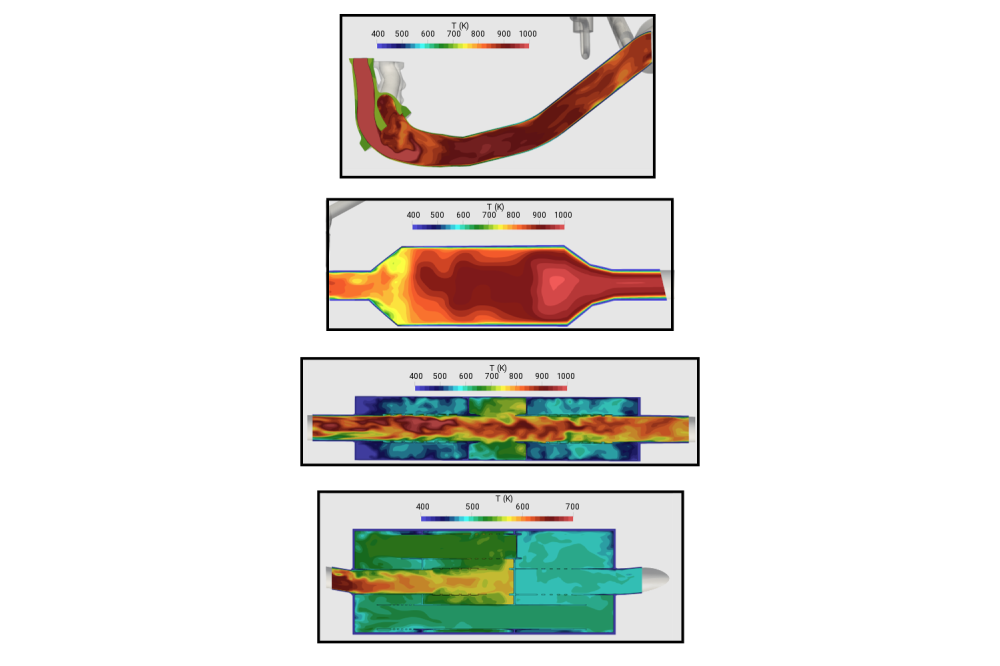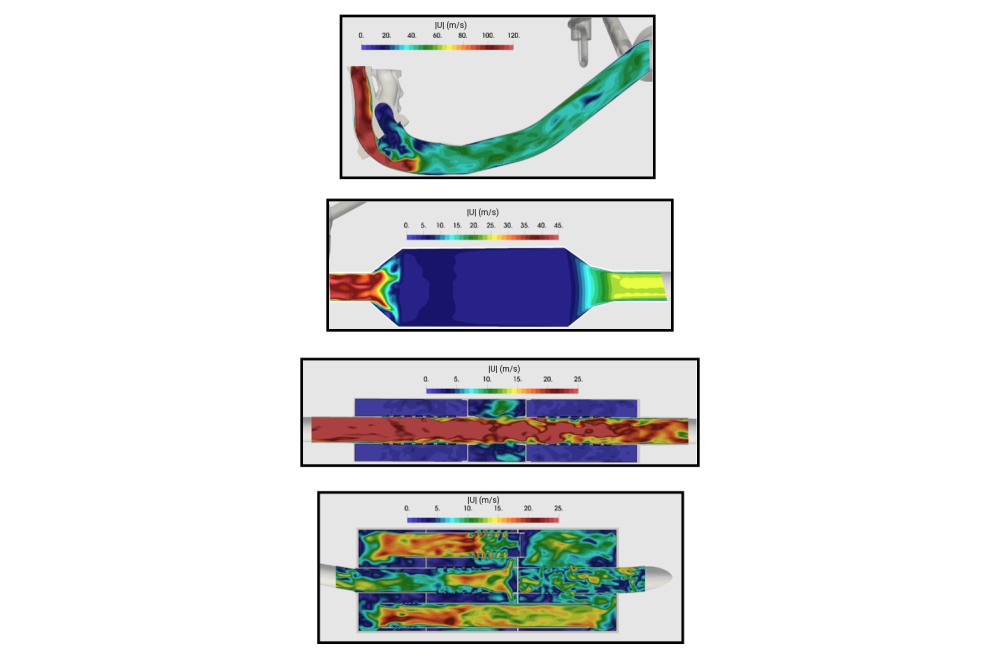Numerical Investigation on the Thermodynamic Performance of an Exhaust Gas System of an IC-Engine Using Large Eddy Simulation
Introduction
The exhaust gas system is a very important part of internal combustion engines, since its structure and thermodynamic performance have a direct impact on the engine power, economy and emission. Due to stringent emission legislation in the automotive sector, technically more elaborated and efficient exhaust systems are required in order to further decrease exhaust emission of modern gasoline engines for automobiles. The Large-eddy simulation technique is expected to predict the unsteady turbulent heat and fluid flow in the exhaust gas system accurately. Despite the great potential of Large-eddy simulation, numerical investigations of exhaust gas systems based on Large-eddy simulation are rarely reported in the literature. This is largely because of high Reynolds numbers and wall-dominated flows in exhaust gas systems which makes Largeeddy simulation of such applications very expensive. Thereby, it is indispensable to carry out the simulation with a High Performance Computer, such as Lichtenberg High Performance Computer.
Methods
A segregated iterative solution procedure, added to the open source C++ library OpenFOAMv1912, is applied to solve turbulent fluid flow with variable physical properties. A low Machnumber approach is employed, suitable for flows under incompressible conditions (Ma ≪ 0.3) and variable physical properties. In contrast to a fully compressible formulation, the pressure and density are formally decoupled by defining the density through an equation of state expressed in terms of local temperature and constant thermodynamic pressure. Thereby acoustic and compressibility effects are neglected, which improve considerably the computational efficiency of the solution algorithm. The low Mach number equations (continuity, momentum, enthalpy) are generally solved using a series of predictor-corrector steps. Thereby, a merged PISO-SIMPE algorithm is applied for coupling velocity and pressure. Moreover, instead of resolved the turbulent heat and fluid flow in the near wall region, the wall effects is modeled by wall functions, which is known as a variant of wall-modeled large-eddy simulation.
Results
At the first step of this project, wall function based Large-eddy simulation approach is implemented in the open source framework OpenFOAM with regrading to the low-Mach assumption, then this implemented solver was evaluated with several exhaust gas relevant generic configurations, e.g. pulsating heated boundary layer flow, impingement cooling/heating, recirculation/ reattachment flow, turbulent conjugated heat transfer, strongly heated boundary layer flow as well as heat and fluid flow in a monolithic catalytic converter. The comparison with DNS and experimental data from the literature, as well as with in-house generated near-wall resolved LES, DNS data and experimental measurement has testified the proposed wall function based Large-eddy simulation approach. This allows an economic yet accurate prediction of wellknown key parameters in wall-bounded flows, namely the skin friction coefficient, the Nusselt number, the Stanton number, the local wall shear stress and the mean wall temperature. Finally, the proposed wall function based Large-eddy simulation approach is applied to investigate the heat and fluid flow processes in an exhaust gas system of LADA Niva 21214 under a typical driving condition. The numerical results compared well with the measured experimental data.
Discussion
The good agreement between results provided by wall function based Large-eddy approach and the reference data, for generic test cases and for the exhaust gas system under a realistic
operating condition, confirms a conclusion that the proposed wall function based Large-eddy simulation approach is capable to represent the turbulent heat and fluid flow in engineering applications under realistic operating conditions. However, as an engineering numerical tool the proposed methodology can be surely improved in different areas, the most important among
them are suggested as follows.
1. The Wall function based Large Eddy Simulation approach can be further extended to appraise the entropy generation in energy systems, which enables an entropy-generation-based irreversibility analysis of technical energy systems and can be a useful tool for both detailed understanding of the underlying physical phenomena and in identifying the key parameters for efficient operation.
2. Another very promising way to speed up such type of simulations is to apply the Lattice Boltzmann Methods to solve the heat and fluid flow inside the exhaust gas system. As it has already been demonstrated by the author, this can reduce the computational cost by a factor of ~ 30–50.





